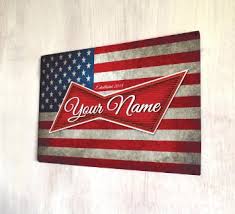When John Osborne gained great popularity by means of his “Look Back in Anger,” he changed the license plate on his sports car, showing a good sense of humor. It read: “A.Y.M” (1). What happened to Osborne? Was he going mad perhaps? No. Osborne was completely clearly understanding, that he represented an icon of the “anger” of young people who projected themselves into the fictional creation that were the Angry (A.) Young (Y.) Men (M.), of whose world Osborne had become the guru or prophet.
As many writers of success, Osborn (born in 1929, the son of working-class parents) failed at school that he left at fifteen, before trying his hand at journalism and then becoming known as both actor and playwright . Sports car and the theatre made the fortune of Osborne, because he started the “New Wave” of English Drama thanks to his hero, Jim (or Jimmy) Porter, a university graduate of about 25, who was a bitter failure in a “cruel” and “unjust” society.
When “Look Back in Anger” was first played at the Royal Court Theatre in 1956, Osborne obtained a checkmate, simply because the Royal Theatre in Chelsea was the home of all the beatniks who “soon” recognized themselves in the frustrated disillusioned and “angry” Jim Porter. Jim Porter, alias John Osborn, has a university degree, “but” refuses to accept a job in which he will have to behave as a middle-class or upper-class man, and makes a living by selling things from a barrow in the market. Jim is extremely discontent and irritable and bad character is made still worse by Alison’s aristocratic self-control. The other characters of the play are Cliff, a friend who lives in another room in the house, and Miss Drury, their landlady who lives below them.
The house becomes a “mad-house,” and a real “zoo” where all cried.
Alison- Look out, for Heaven’s sake! Oh, it’s more like a zoo every day!
Jimmy- Darling I’m sorry.
Alison- Get out!
Jimmy- I’m sorry, believe me
Alison (to Cliff)- Where is he?
Cliff- In my room.
Alison- What’s he doing?
Cliff- Lying on the bed. Reading, I think (Look Back in Anger).
While we are waiting for the “rude” awakening of Jim, we would simply underline that “Look Back in Anger” scored a tremendous success in 1956 as it interpreted the frustration and anger of the younger generations in the 50’s. Jim Porter, the hero, became a symbol of the vague aspirations of dissatisfied young people and their protest against Establishment. One day someone asked Alberto Moravia about the British Establishment in the 50’s. “But what is the so-called British ‘establishment’? It is the Court, the abuses of the powerful, the State […] In Italy the establishment is the Italian State, the Church, and the monopoly in industry” (2).
But who were the Angry Young Men “really”? Kenneth Allsop was no soft or tender with them: “The larger result is that the new dissentients feel unassimilated […] The go-getter is no new type, either to society or fiction, but the difference in the post-war model is that, although driven by ambition, envy and greed […], he has no admiration or liking for the class he is gatecrashing. He wants its advantages and privileges, but […] he has no wish to be assimilated. […]” (3). In conclusion, according to Kenneth Allsop, the A. Y. M. were insignificant social climbers. Maybe Kenneth Allsop had been too harsh in his judgment of Osborne , but it is a fact that John Osborne drove a sports car (including a Bentley and a Cadillac) and not a mini-car in the mid 50's:
“Osborne would own a few cars in his time, including a Bentley and a Cadillac” (4).
Works Cited
1) “With the proceeds of this success Osborne bought his first car. When the license plates arrived they bore the initials A.Y.M.” ( see Alan Carter, “John Osborne”: Edinburgh, Oliver and Boyd, 1973, p. 12).
2) From an interview with Moravia in “L'Espresso,” October 20, 1963.
3) Kenneth Allsop, “The Angry Decade,” London, Peter Owen Limited, 1958, p. 27.
4) John Heilpern, “ John Osborne: A Patriot for Us,” Chatto & Windus, 2006, p. 152. With regard to this, Dan Rebellato tells us a funny story: “At the end of Osborne’s 1960 television play, A subject of the Scandal and Concern, the narrator signs off sardonically suggesting that the audience may all be waiting for the adverts. ‘That’s all. You may retire now. And if a mini-car is your particular mini-dream, then dream it’ (Presumably the sports car Osborne brought with the fists profits of Look Back in Anger was a maxi-dream)” ( See Dan Rebellato, “1956 and All That: The Making of Modern British Drama”: London, Routledge, 1999, p. 33).
I testi, le immagini o i video pubblicati in questa pagina, laddove non facciano parte dei contenuti o del layout grafico gestiti direttamente da LaRecherche.it, sono da considerarsi pubblicati direttamente dall'autore Enzo Sardellaro, dunque senza un filtro diretto della Redazione, che comunque esercita un controllo, ma qualcosa può sfuggire, pertanto, qualora si ravvisassero attribuzioni non corrette di Opere o violazioni del diritto d'autore si invita a contattare direttamente la Redazione a questa e-mail: redazione@larecherche.it, indicando chiaramente la questione e riportando il collegamento a questa medesima pagina. Si ringrazia per la collaborazione.


